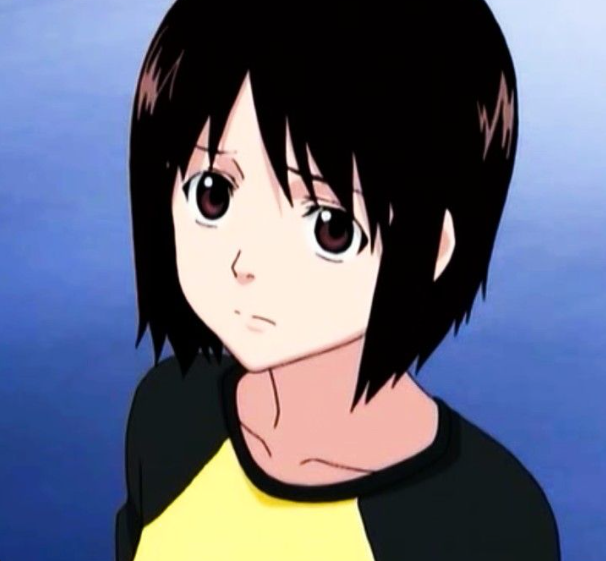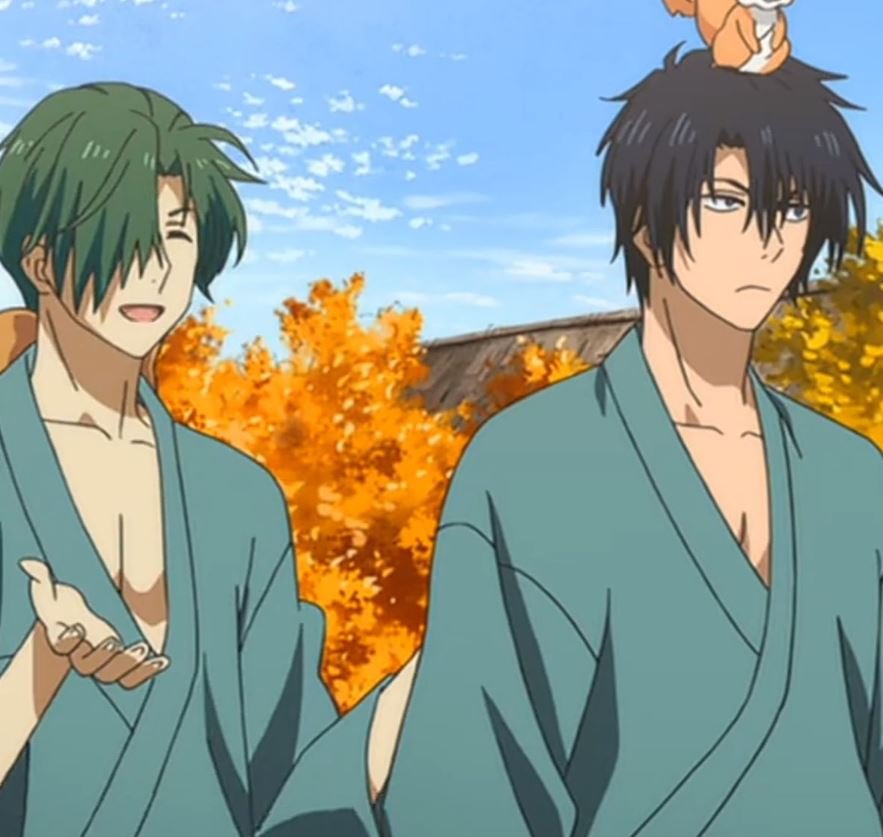
Misaki Nakahara
Misaki Nakahara |
|
|---|---|
 |
|
| Kanji | 中原岬 |
| Rōmaji | Nakahara Misaki |
| Age: | 18 |
| Birthday: | March 26 |
| Height: | 158cm |
| Voice Actor | |
| Japanese | Yui Makino |
| English | Stephanie Wittels |
Misaki Nakahara (中原岬, Nakahara Misaki), is one of the main characters in Welcome to the NHK! (NHK ni Yōkoso!), appearing in the anime, manga, and novel adaptations. She is a mysterious young girl who unexpectedly enters the life of Tatsuhiro Satou, claiming that she has created a “special project” to cure him of his hikikomori condition. Though she initially appears to be a kind and helpful person, Misaki harbors deep personal insecurities and psychological struggles that make her just as emotionally fragile as Satou himself.
Despite being portrayed as Satou’s savior, Misaki’s true motives become increasingly ambiguous and complex as the story unfolds. Their relationship is built on manipulation, dependency, and hidden pain, making her one of the most enigmatic and psychologically layered characters in the series.
Background

Appearance in anime
Misaki’s past is largely unknown at first, but as the story progresses, it is revealed that she has experienced a deeply traumatic and lonely upbringing. She was raised by a wealthy but highly neglectful family, particularly her emotionally abusive aunt, who constantly degraded her self-worth. This lack of love, support, and validation caused Misaki to develop severe abandonment issues, low self-esteem, and a desperate need for control over others.
Due to her isolation and childhood trauma, Misaki has grown up deeply insecure and emotionally unstable, despite her outward gentle and cheerful demeanor. She is secretly desperate for companionship, which leads her to seek out Satou not just to help him, but to create a situation where someone would be dependent on her. This toxic dynamic ultimately shapes the nature of their relationship.
Appearance
Misaki has short brown hair, large brown eyes, and a petite build, giving her an innocent and youthful appearance. She is usually seen wearing a simple dress or casual clothing, emphasizing her quiet and modest personality.
Unlike other characters in the series, she does not have a disheveled or unhealthy look, making her seem more put-together on the surface. However, as the story progresses, subtle changes in her expressions and posture reveal her inner sadness and emotional fragility.
Personality
At first glance, Misaki appears kind, patient, and soft-spoken, presenting herself as a selfless person who genuinely wants to help Satou escape his hikikomori lifestyle. She is often gentle and understanding, rarely showing signs of anger or frustration.
However, beneath her calm and composed exterior, Misaki is deeply insecure, manipulative, and emotionally dependent. Her desperate need to be needed causes her to exert control over Satou’s life, making him feel as though he cannot function without her guidance. This results in a highly toxic and codependent relationship, as Misaki’s “help” is just as much about her own need for validation as it is about saving Satou.
Her greatest fear is abandonment, and she subconsciously seeks out damaged individuals so that she can feel superior and indispensable to them. As the story progresses, it becomes clear that Misaki is not as emotionally stable or altruistic as she initially appears, making her one of the most complex and morally ambiguous characters in the series.
Role in the Story
-
The “Savior” of Satou
Misaki introduces herself to Satou as his self-appointed savior, claiming that she has created a special “therapy program” to help him overcome his hikikomori condition. She pressures him into signing a contract, which states that he must attend nightly lectures where she will teach him how to rejoin society. Initially, Misaki seems to be a guiding force in Satou’s life, encouraging him to step outside, interact with others, and confront his fears. She consistently pushes him toward self-improvement, acting as a mentor and caretaker. However, as the story unfolds, it becomes clear that Misaki’s motivations are far from pure, and that her desire to “save” Satou is rooted in her own personal demons. -
Manipulation and Emotional Dependency
As Misaki’s past is slowly revealed, it becomes evident that her relationship with Satou is far from healthy. Instead of encouraging him to grow independently, Misaki subtly ensures that he remains dependent on her, reinforcing his feelings of helplessness. -
The Suicide Revelation and Breakdown
As the story nears its climax, it is revealed that Misaki has severe depression and suicidal tendencies. Her cheerful and caring persona is simply a mask to hide her intense feelings of worthlessness and loneliness. At one point, she contemplates ending her life, believing that she is unlovable and will always be abandoned. Satou, despite his own crippling self-doubt, is finally able to see through her facade, realizing that she is just as broken as he is. Their relationship reaches a turning point, forcing both of them to confront their toxic dependence on one another. -
The Final Stand and Hope for the Future
In the final moments of the series, Misaki’s manipulative tendencies lessen, and she begins to show genuine care for Satou’s well-being without forcing him into a dependent relationship. Though their connection remains complicated and far from perfect, they ultimately choose to keep living and struggling together, symbolizing a small but significant step toward healing. The story does not provide a perfect resolution Misaki is still emotionally fragile, and Satou still struggles with his issues but they no longer face their pain alone, offering a realistic portrayal of growth, setbacks, and mutual understanding.
Relationships
Tatsuhiro Satou
Initially viewed as her “project”, Satou becomes Misaki’s emotional anchor. Their relationship is deeply unhealthy, built on mutual dependence and manipulation. However, as the story progresses, they slowly develop a more honest and supportive dynamic.
Misaki’s Aunt
A cruel and emotionally abusive figure in Misaki’s life, responsible for much of her low self-worth and fear of abandonment.
Kaoru Yamazaki
While they don’t interact much, Yamazaki distrusts Misaki’s influence on Satou, recognizing that she is not as pure-hearted as she seems.